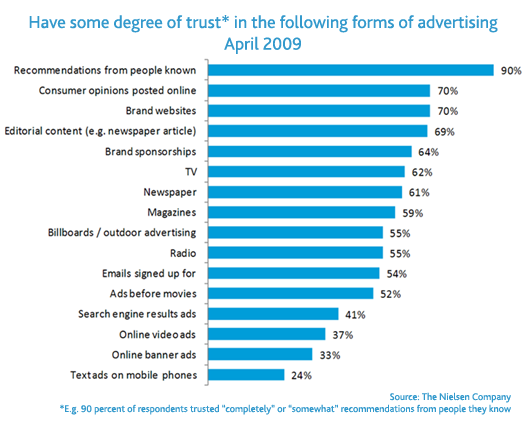The real benefit of delightful customer experiences
- The product is gorgeous and has all the functional benefits we envisioned from our extensive prototyping and user testing.
- We are enjoying positive user reviews on Amazon
- Great tweets and followers everyday
- Growing Facebook fans
- Steady search engine rankings
- Various blogs and websites reviewing the product positively
(Note: it rarely happen this way but for simplicity sake let’s say we bucked the odds on this one)
Ideal Digital Customer Engagement
- He is ecstatic at how easy it is for him to pick up and go about his day without forgetting anything.
- When he has a great idea, he can journal it out and make notes.
- He’s revamped how he journals in his Moleskine based on tips he picked up off our blog.
- He subscribes to our monthly email that highlights users tips and features an interview of people similar to Chris that are getting closer to their professional goals by being more productive and creative.
- He retweets our content on Twitter.
- He “Likes” us on Facebook and regularly chimes in on the comments for our posts and pictures.
- Chris even approaches us for publishing some of his own tips on how he uses journaling professionally. We do an interview and feature him on the website under our “Friends We Love” section.
As smart online marketers, we are able to track Chris’s account on our website (with his permission via his opt-in for future offers following his first purchase) and as a result can offer him special incentives through email marketing tools. He has numerous friends that use Moleskine journals as well and he starts to buy them the same product he is enjoying. We include a special note in Chris’s package and thank him for recommending us.
Chris is starting to become what marketers call an evangelist. He in effect is doing our marketing for us because he eagerly spreads the good word for us.
Key takeaway: Never underestimate the power of word of mouth, even in the digital age. We will always trust our friends and family’s remarks over any marketer’s message. In the absence of this, we will trust the crowd through user reviews and search results. You must do everything you can to ensure this happens in a positive light which is why every brand touchpoint must align.
Only through great word of mouth do brands grow and the marketing costs stay in check. The web has only amplified this and destroys or builds brand with frightening speed. Imagine how impossible this becomes when marketing a sub-par product or service.
Finally, here’s some proof on the power of word of mouth from Nielsen.
- 90% trust recommendations from people they know.
- In absence of this, a whopping 70% trust consumer opinions online.
As the chart above shows, traditional advertising ranks way down the list for eliciting trust.
What About Mobile?
And finally, recent research from Pew Internet & American Life Project shows that during the 2010 holiday season:
More than half of adult cell phone owners used their cell phones while they were in a store during the 2011 holiday season to seek help with purchasing decisions. During a 30 day period before and after Christmas:
- 38% of cell owners used their phone to call a friend while they were in a store for advice about a purchase they were considering making
- 24% of cell owners used their phone to look up reviews of a product online while they were in a store
- 25% of adult cell owners used their phones to look up the price of a product online while they were in a store, to see if they could get a better price somewhere else
Taken together, just over half (52%) of all adult cell owners used their phone for at least one of these three reasons over the holiday shopping season and one third (33%) used their phone specifically for online information while inside a physical store—either product reviews or pricing information.
We can’t win on price. We can’t advertise our way to becoming trusted brands. We can’t hope that customers won’t use the web at the time of purchase.
There is nowhere to hide if we do not build remarkable experiences and engagement into our digital brand.


